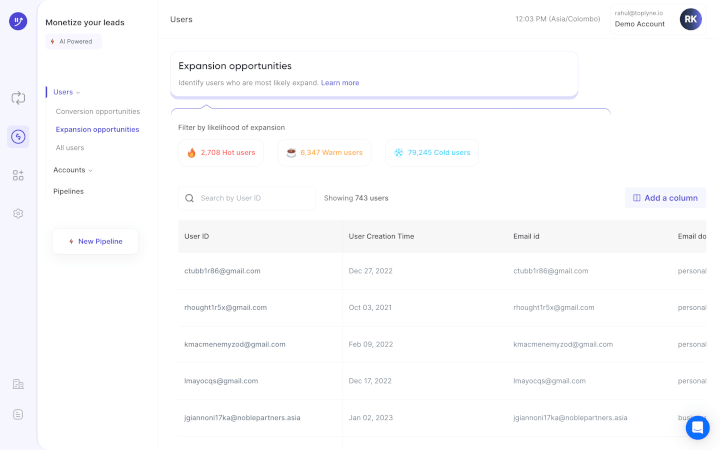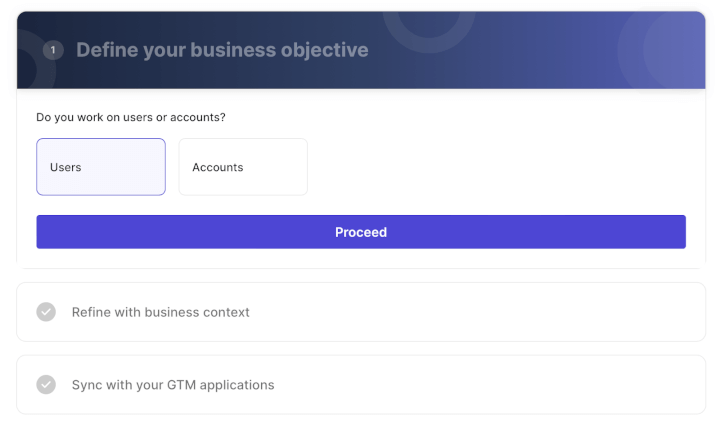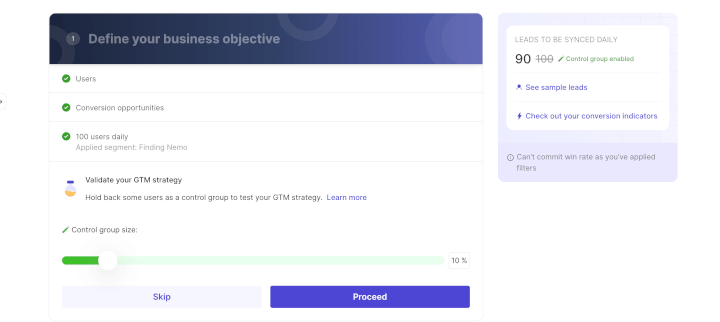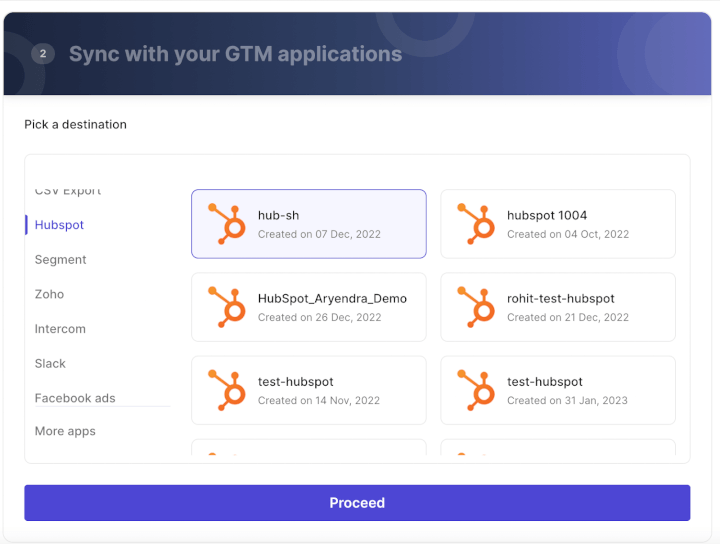Third-Party Data Explained: Leveraging B2B External Insights

Sales teams are essentially running blind without data on their economic buyers. The buyer segmentation is weak, outreach messaging is generic, and demos are misaligned. It is thus crucial that sales reps layer buyer data into their sales processes. Buyer data can be first-party, second-party, or third-party data. First-party data is the information a company collects directly from its users. Second-party data is the information a company sources from its trusted partners. Third-party data is acquired from data aggregators or providers that don’t have direct relationships with users.
Not only is B2B data hard to acquire, it often exists in silos. The problem of siloed data is solvable with a customer data platform (CDP) that collects customer data from various locations and combines them. However, to gather sufficient information on B2B customers, companies rely on external or third-party data. This data is essential to generate more and deeper buyer insights than possible with only first-party and second-party data.
I. Understanding Third-Party Data
Third-party data is information from apps, websites, other platforms, and sources, including governments and non-profits. It is collected by an entity other than the organization that will use it. As third-party data comes from various sources, it is broad and effectively supplements the other data types.
You can acquire third-party data from several sources. They include business intelligence platforms that also enable you to visualize and make sense of the information. Other third-party data sources include public records like the Bureau of Labor Statistics, user surveys, academic sources, business intelligence platforms like Zoominfo, Clearbit, and Apollo, social media profiles like LinkedIn, and data services companies like Nielson, Acxiom, and TransUnion.
III. Importance of Third-Party Data
- Expanding market reach
Third-party data collection is an effective strategy to reach more prospects and increase your targetable user base. The more insights you can gather from third-party data, the more user segments you can reach with targeted messaging and personalized demos.
- Enhancing customer profiles and personas
By using different types of data, you can create detailed buyer personas. Publicly available demographic and firmographic data sets allow you to build accurate and comprehensive profiles of companies and decision-makers.
- Filling data gaps
Though your CRM is a rich source of account data such as purchase histories and lead data, it isn’t sufficient to understand the buyer at a deeper level. It is also true for the customer data a company collects from its own audience and the zero-party data that buyers intentionally and proactively provide the company. Third-party data merge your existing data with more authoritative information and provide the context needed to gain a 360-degree view of the buyer.
IV. Applications in B2B Sales Processes
- Audience segmentation and targeting
Third-party data sources are valuable in placing leads in cohorts based on different criteria and modeling user segments. You can identify new audiences and understand your current buyer groups at a granular level.
- Enhancing customer personas
Looking to improve the quality of your buyer personas? Overlaying your buyer data with third-party data can add more context to the patterns you observe in your first-party data. Enhancing your buyer persona will allow you to focus your messaging, product features, pricing, and demos toward your target audience.
- Predictive Lead Scoring
Predictive lead scoring is a data-driven, AI-based lead scoring that uses all historical customer data to continuously calculate a score for each lead in real-time.
Tools like Toplyne, continuously segment and score your leads to surface conversion and expansion pipeline in your CRM for your sales teams to go after. This helps your reps prioritize the right leads and save dozens of hours every sales cycle. The key difference between predictive lead scoring and other manual methods is that it can be automated. Its fast-paced, self-learning algorithm is the basis for predictive lead scoring’s speed and accuracy making it ideal for B2B companies. Read more about predictive lead scoring here.
Here’s how companies like Canva and Vercel generate sales pipeline from their self-serve funnel using Toplyne:
- Step 1/7: Create monetization playbooks to surface conversion and expansion opportunities (leads most likely to convert to paying customers, and teams most likely to grow into larger teams)

- Step 2/7: Choose the right leads to target – users (individual users) or accounts (a group of users with an organization).

- Step 3/7: Select the frequency at which you would want leads synced in your GTM apps.

- Step 4/7: Define how many leads you want by either the number of leads or your expected win rate, depending on your sales capacity and GTM strategy.

- Step 5/7: Build custom segments - Build custom segments based on And/Or logic at the deepest level of sub-properties within your product analytics.

- Step 6/7: Validate your GTM strategy - Hold back some users as a control group to test your GTM strategy.

- Step 7/7: Sync your product qualified pipeline into your GTM destinations - CRMs, sales & marketing execution tools, and customer engagement platforms.

- Personalized Outreach Messaging
Speaking directly to users’ pain points and requirements is essential to a positive customer experience. By providing a comprehensive view of the buyer, third-party data helps develop a more targeted sales and marketing strategy. Sales teams can use data to personalize their messages and conversations, aligning better with the customer base and increasing chances of deal wins, upsells, and retention.
- Tailored Demos
Demos tailored to your buyers’ priorities and pain points lead to better conversion rates. Third-party data which includes firmographics, technographics, and intent data helps you access these data points that lead to a tailored demo best suited to your prospect’s use cases. Doing this without the essential third-party data would be just shooting in the dark.
V. Conclusion
Third-party data is undoubtedly valuable, but remember, it is not unique, and your competitors can obtain the same data as you. There’s a chance that the datasets may be of low quality. It becomes thus crucial that you layer in and combine first-party data with third-party data and then layer it in your sales processes.


.svg)









.png)